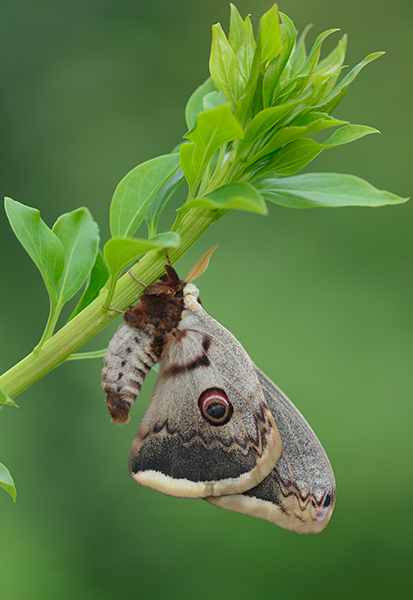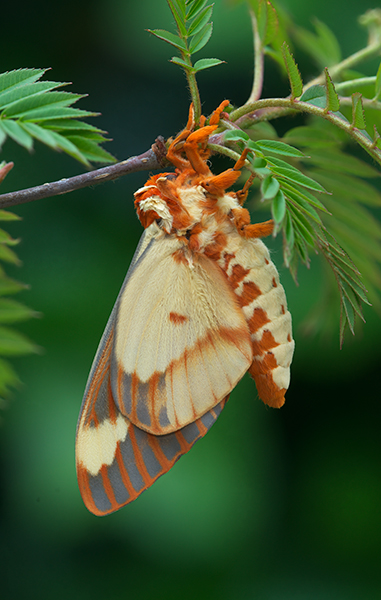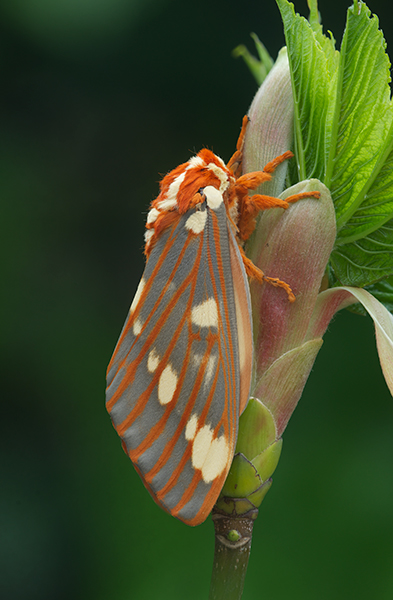Saturnid Moths
Male in normal resting posture revealing just a small part of the large eyespots on the hindwings.
Nikon D800, 200mm micro Nikkor, ISO 200, Flash, Tripod.
My interest in these magnificent moths goes back a long way to the very first Emperor Moth I ever discovered in the wild. Saturnids, or Silkmoths as they are often called, belong to a family of moths that are mostly tropical – over half the known species occur in the Americas. They vary in size from medium and large to enormous. Their mouthpars are vestigial, meaning they do not feed in the their adult state. They are, however, among the most beautiful moths in the world. There are a small number of species which occur in Europe and one single species, the Emperor Moth that is widespread in the British Isles.
I have been lucky over the years to have travelled to photograph some of them in the wild and have spent 20 years photographing and documenting many species, including their life cycles – some of which have seldom been photographed.
The Giant Peacock Moth is Europe’s largest moth. It is and found in many western European countries including France, Spain, Czech Republic and Turkey. It is a large striking insect, not unlike our Emperor Moth, only considerably larger. The other species is known as the Regal Moth, found chiefly in the eastern USA. Both are very large moths. The Regal Moth can have a wingspan up to 15cm.

Giant Peacock Moth Saturnia pyri
Emerging male in the final stages of wing expansion.
Nikon D800, 200mm micro Nikkor, ISO 200, Flash, Tripod.

Regal Moth Citheronia regalis
Newly emerging adult still in the process of expanding and drying its wings.
Nikon D800, 200mm micro Nikkor, ISO 200, Flash, Tripod.

Regal Moth Citheronia regalis

